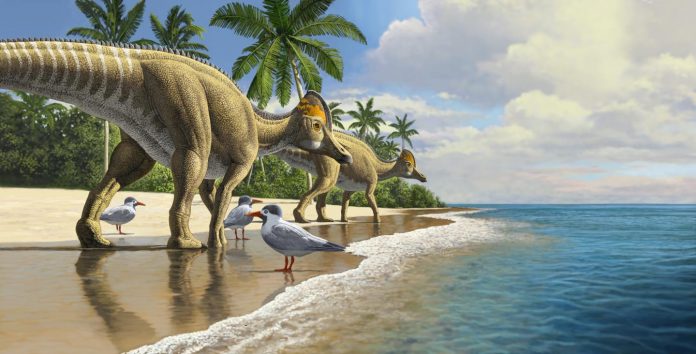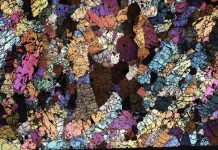
A new duckbilled dinosaur fossil has been discovered in Africa suggesting that they crossed hundreds of kilometres of open water to get there
The discovery of the new fossil in a mine a few hours from Casablanca was “about the last thing in the world you would expect,” said Dr Nicholas Longrich, of the Milner Centre for Evolution at the University of Bath, who led the study. “It was completely out of place, like finding a kangaroo in Scotland. Africa was completely isolated by water – so how did they get there?”
The Ajnabia odysseus was a member of the duckbill dinosaurs, a diverse plant-eating dinosaur that grew up to 15 meters long. However, the new discovery was just 3 meters long.
Lambeosaurinae
Study of Ajnabia’s distinctive teeth and jawbones show it belonged to Lambeosaurinae, a subfamily of duckbills with elaborate bony head crests. Lambeosaurs evolved in North America before spreading to Asia and Europe, but have never been found in Africa before.
Ocean crossings are rare but have been observed in historic times. Because Africa was isolated by deep oceans at the time, duckbills must have crossed hundreds of kilometres of open water to colonise the continent.
Duckbills were probably powerful swimmers due to their large tails and powerful legs. Their fossils are often found in river deposits and marine rocks, so they may have simply swum the distance.
“Sherlock Holmes said, once you eliminate the impossible, whatever remains, no matter how improbable, must be the truth,” said Longrich. “It was impossible to walk to Africa. These dinosaurs evolved long after continental drift split the continents, and we have no evidence of land bridges. The geology tells us Africa was isolated by oceans. If so, the only way to get there is by water.”
“Over millions of years, once-in-a-century events are likely to happen many times. Ocean crossings are needed to explain how lemurs and hippos got to Madagascar, or how monkeys and rodents crossed from Africa to South America.”
“As far as I know, we’re the first to suggest ocean crossings for dinosaurs,” added Longrich.
Dr Nour-Eddine Jalil, from the Natural History Museum of Sorbonne University (France) said: “The succession of improbable events (crossing an ocean by a dinosaur, fossilization of a terrestrial animal in a marine environment) highlights the rarity of our find and therefore its importance.
“Ajnabia shows us that hadrosaurs have set foot on African land, telling us that ocean barriers are not always an insurmountable obstacle.”
The international team of scientists was led by the University of Bath with researchers from the University of the Basque Country UVP/EHU (Spain), George Washington University (USA) and the Natural History Museum of Sorbonne University (France) / Universite Cadi Ayyad (Morocco).
The study has been published in Cretaceous Research










